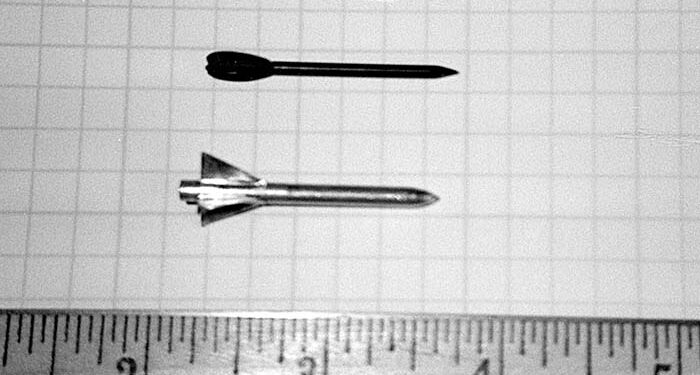By David Harber
Place: Washington, D.C.; Senate Intelligence Committee Hearings.
Time: September 16, 1975
Former Director of Central Intelligence William Colby is testifying before the committee as to the purpose of the 11 grams of shellfish toxin recently discovered in a little used store room at Langley, as well as that of the several types of dartguns found…
The Chairman (Senator Frank Church of Idaho): “Have you brought with you some of those devices, which would have enabled the CIA to use this poison for killing people?”
Mr. Colby: “We have, indeed.” (With somewhat of a flourish, he produces the pistol).
The Chairman: “Does this pistol fire the dart?”
Mr. Colby: “Yes, it does, Mr. Chairman. The round thing at the top is obviously the sight, the rest of it is what is practically a normal .45, although it is special. However, it works by electricity. There is a battery in the handle, and it fires a small dart.”
The Chairman: “So that when it fires, it fires silently?”
Mr. Colby: “Almost silently; yes.”
The Chairman: “What range does it have?”
Mr. Colby: “One hundred meters, I believe; about 100 yards, 100 meters.”
The Chairman: “About 100 meters range?”
Mr. Colby: “Yes.”
The Chairman: “And the dart itself, when it strikes the target, does the target know it has been hit and is about to die?”
Mr. Colby: “That depends, Mr. Chairman, on the particular dart used. There are different kinds of these flechettes that were used in various weapons systems, and a special one was developed which potentially would be able to enter the target without perception.”
The Chairman: “And did you find such darts in the laboratory?”
Mr. Colby: “We did.”
The Chairman: “Is it not true, too, that the effort not only involved designing a gun that could strike at a human target without knowledge of the person who had been struck, but also the toxin itself would not appear in the autopsy?”
Mr. Colby: “Well there was an attempt—”
The Chairman: “Or the dart.”
Mr. Colby: “Yes; so there was no way of perceiving that the target was hit.”
The Chairman: “As a murder instrument, that is about as efficient as you can get, is it not?”
Mr. Colby: “It is a weapon, a very serious weapon.”
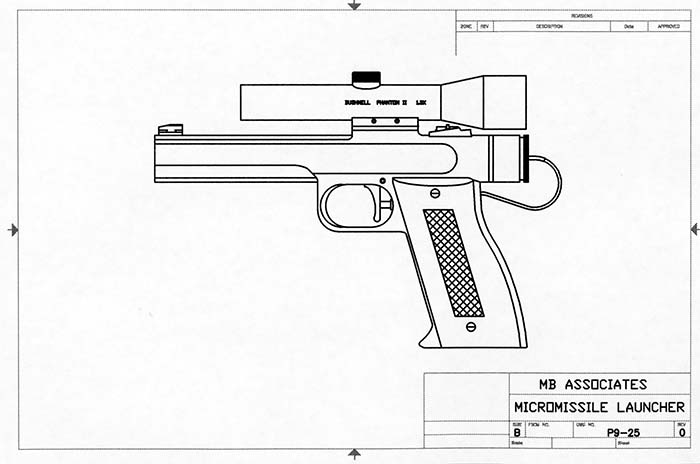
And so, the legend was born. And as with many legends, it has grown to near mythic proportions as the “CIA Dartgun”, firing hair sized darts, which entered their targets painlessly and dissolved, leaving no trace. In the twenty odd years since DCI Colby unveiled it at the hearings, no additional information has surfaced on this unique system, a fact that is somewhat unusual in this field. All that has existed is the testimony presented at the hearing and a few photos taken at the time. The types of mechanisms speculated upon over the years have ranged from an electromagnetic coil, which launched the dart by magnetic repulsion (a rumor which personally caused me several years of fruitless research), to subminiature rockets (which are an interesting story in their own right). As with most legends, the fact is somewhat removed from the fantasy. In this article I will attempt to remove some of the mystery surrounding this unique piece of hardware, though I will admit that I am only near the beginning of the search for all the answers on this project. Even this modest amount of progress has taken almost five years, chasing leads and rumors, and dozens of official (and some not quite so official) inquiries.
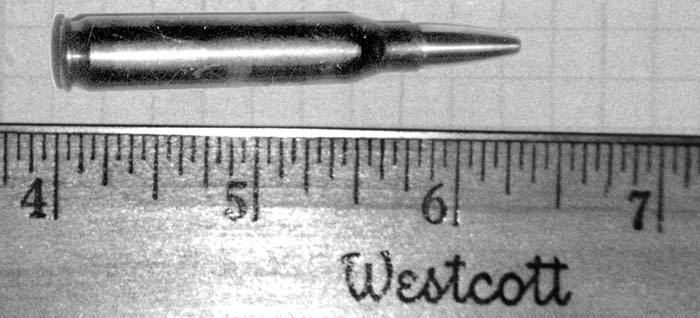
The MML (micro missile launcher) as it was officially known, was not an Agency product, but rather was developed for the U.S. Army’s Special Operations Division at Fort Detrick, Maryland. At the time, Fort Detrick was the Army’s center for biological warfare R&D, and SOD was tasked with coming up with new and interesting toys for the Special Forces. MB Associates conducted the primary development of the MML, a private company better known for the production of the Gyrojet rocket pistol and Stunbag crowd control munitions. The inventor was MBA’s resident genius in the field (they had several, in as many disciplines), Robert Mawhinney, who also invented the Stunbag concept. A patent was issued in 1967 covering the salient features of the guns and their cartridges. Much to the chagrin of everybody involved in the project, it was immediately published in the Patent Office’s Gazette. They all held their collective breath for awhile, but apparently no one took any notice of it. The guns themselves were built under great secrecy in late 1967 and 1968 at MBA’s San Ramon, California facility. The exact number produced is as yet unknown. Investigation using the DOD contract number they were produced under revealed an interesting fact – the Army has no record of such a number ever being issued, even though it was taken from the cover of the instruction manual for the weapon!
While the CIA did have at least two MMLs in their possession, one in DCI Colby’s safe and one in a little used storage room, their main concern was with the development of a variation for use on guard dogs. The stated mission of this weapon was to enable an operator to disable the guard dogs on duty at the premises targeted, enter the building and “take care of business”, and then allow the dog to revive, none the worse for wear and without any outward signs that it had been disabled. This variant, the “Dog Tranquilizer Dart Gun”, was built at SOD exclusively for the CIA, and apparently used extensively during the period. It utilized larger darts than the MML (exact caliber unknown) to carry a load of EA-4640, an animal tranquilizer developed at Edgewood Arsenal. The amount of drug carried on the dart was three milligrams. When the senate committee noted that this amount was considered a fatal dose for humans, their fears of nefarious use were put to rest by SOD engineer Charles Senseney. He stated in his testimony “You may as well shoot a man (with a conventional firearm) if you are going to use something the size that they were using there”. This gun was a single shot, pengun-like affair with an optional barrel extension, first described by John Minnery in his book “Fingertip Firepower”. His coverage of the actual dart gun is dead-on correct, with the exception of their projectiles. Two other types of dartguns were discovered in the laboratory storage room at Langley that have yet to be positively identified, but one is believed to be a modified Armalite AR-7 survival rifle. The AR-7 was used as a test bed in early development, due to its easily removable barrel.
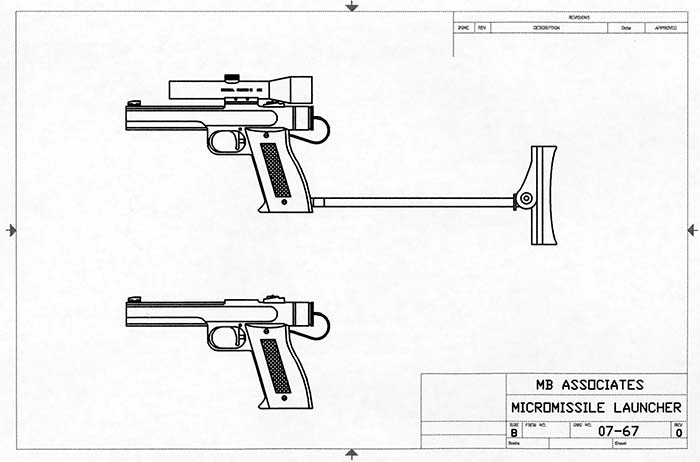
A number of other weapons using this technology were also built at SOD, at least as prototypes. These included a walking stick, a fountain pen, an umbrella, and a butane cigarette lighter. A declassified CIA memo dated October 1967 notes the following “Among the many delivery systems held in readiness at the present (my emphasis) are silent electrical launchers, mechanical launchers, rounds for loading into the launchers, ammunition concealment rounds which fit into carbines and rifles.” The true beauty of the system was that it could be incorporated into almost anything. There was apparently a limited production run of the item mentioned in the memo as “Ammunition Concealment Rounds”. These were special dart launchers, the same size and shape as a conventional rifle cartridge. They chambered in the rifle in the normal manner, and fired using a conventional small arms primer. They were remarkably similar in construction to the shell shrinkers, now available commercially, but outwardly resembled a normal hollow-point cartridge. The report of the rounds has been described as being like that of a cap pistol. At least three calibers of concealment round have been identified: a .223, a .30 carbine, and a .30-06. 38 of the .30-06 rounds were discovered in the storage room at CIA Headquarters. These carried a 3-milligram load of EA-4640, the same as the previously mentioned “Dog Tranquilizer Dart Gun”. The accuracy of these rounds could not have been very good at even moderate ranges, given that the cartridge itself comprised the entire barrel of the launcher, but were probably adequate for close range work.
Basically, the MML itself was an electrically ignited, powder fired dart launcher. The pistol was fabricated from die cast aluminum alloy while the barrel was actually made from a length of hypodermic tubing with a bore size of .033”. A battery and capacitor circuit housed in the grip portion of the weapon ignited the cartridge containing the dart. Built into the front portion was a simple baffle-type silencer. Though of conventional, even archaic design by today’s standards, the silencer achieved its excellent performance (one aspect of the legend which was most definitely not an exaggeration) by virtue of its massive volume in relation to the bore size of the MML. By way of comparison, a similar silencer on a .32 caliber pistol would be four and one half inches in diameter and thirty inches long! A 1.3 power Bushnell Phantom II pistol scope was standard equipment on the MML, with a set of conventional iron sights as back up. A removable metal strut-type stock of ingenious design was also supplied. It was purposely made to outwardly resemble a standard GI .45, so as to be able to ride in the standard GI holster without notice.
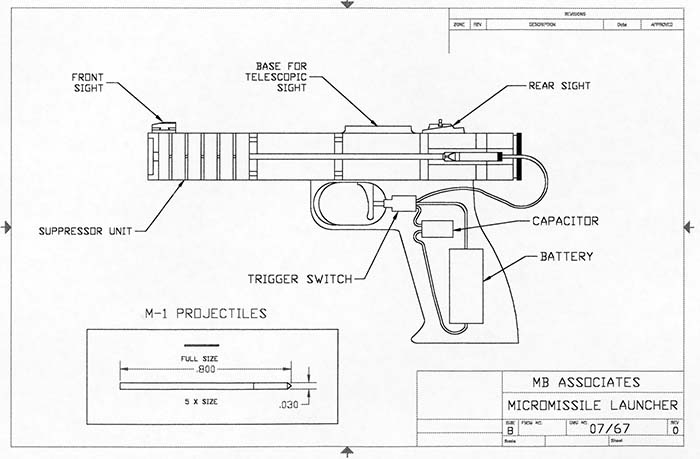
All in all, the MML itself was not much more than an electrically ignited single-shot pistol. The truly sophisticated part of the system was the dart cartridge. This was a slim, cylindrical tube, about the size of a .22 Magnum cartridge, with a truncated cone shaped nose. It was initiated by an electrical bridgewire, similar to that used in an electric blasting cap, but requiring more voltage. The powder charge used was miniscule, about 1/10 of a grain, and propelled a bimetallic, mass stabilized dart to a velocity of about 750 feet per second. This dart had a forward nose portion made from tungsten, and a rear tail portion made of magnesium. It measured 0.03 inches in diameter, was about 0.800 inches long, and weighed, fully loaded with toxin, about one grain. The toxin was applied to the dart, using a technique that I would rather not go into. When firing this type of dart, the MML had an effective range of about 250 feet. Though several types of toxin were experimented with in this program, the one finally settled on was saxitoxin. This toxin is produced by a tiny dinoflaggelate organism living in seawater. When clams, mussels, or other mollusks feed on this organism, they concentrate it in their organs and become very toxic. If a person eats the contaminated mollusk, they contract what is known as “Paralytic shell fish poisoning”. In its purified form, saxitoxin is extremely quick and deadly in a very low dosage, routinely less than one milligram. The CIA used it to coat their suicide needles, such as was carried by Francis Gary Powers on his ill-fated U-2 flight over the Soviet Union in 1960. Upon being struck by the dart, the person would after a few seconds, experience a tingling sensation over their body and then lose consciousness and die within one minute. The pain experienced by the actual impact of the dart varied with the individual and circumstances, and could range from being completely unnoticed to that of a bee sting.
A smaller version of the dart was developed, the A-1 model, which measured 0.015 in diameter and about 0.40 inches long, exactly half the size of the regular dart. The carrying capacity of this dart was rated at 0.5 milligrams. There were some differences in the construction of this variant, but based on the limited data released thus far, I can’t honestly tell you what it was. The possibility exists that it may be the legendary “dissolving dart” mentioned in the patent. The impact of this dart was described as being like a mosquito bit. It had an effective range of about 50 feet.
The MML was simple to operate. The safety switch was first pushed to the rear test position to check the battery charge. It was then returned to safe position. The end cap was then unscrewed and a cartridge inserted into the chamber. The cap was then screwed back into place. The safety switch was then pushed forward to the fire position. After a brief wait of about four seconds to allow the capacitor to charge, the weapon was ready to fire. Upon pressing the trigger, the electrical charge stored in the capacitor discharged across the bridgewire in the cartridge and the weapon fired. The noise upon discharge was described as being somewhat akin to that of an air pistol, though appreciably quieter. It was noted that under some circumstances the click of the trigger switch could also be heard.
Probably the most intriguing question about the MML was whether or not it ever saw combat in Vietnam. The official answer is no, it was not “in the logistical pipeline fast enough”. I have learned from two separate sources, however, that it did see some limited use, primarily field-testing. Since the Army had the MML for at least a year and a half before all toxin weapons were outlawed, it would seem likely that this was the case. Many unique types of weapons and techniques were given limited testing during the war, and since a weapon of this type would allow an ambush unit to quickly and silently neutralize the point man on a patrol, or an assault force to eliminate any guards prior to an attack, it would have been ideal for use by Special Forces in Vietnam.
Unfortunately, politics intervened to deprive the American military of possibly the most effective weapon of its type yet developed. In November of 1969, President Nixon signed an Executive Order disavowing all American use of biological weapons, and ordering any weapons of this type destroyed. In February 1970, he expanded this order to include weapons using toxins of biological origin, such as the saxitoxin used in the MML. This sounded its death knell and all the weapons and their ammunition were destroyed at Fort Detrick by the end of the year. A problem with political decisions such as President Nixon’s was that sometimes they are based on faulty data. This later proved to be the case. In early 1969, FBI counterintelligence received information from one of their most reliable sources, a Soviet mole, code named “Pandora”, that the Soviets were seriously lagging behind the U.S. in the development of biological warfare agents and weapons. In view of “alarming” work contemplating a massive “catch up” program. To avoid this possibility, as well as to score a “moral victory” on the Soviets, Nixon wrote and signed his order. There was only one catch-Pandora later proved to be a double agent. But that, my friends, is most definitely another story.
| This article first appeared in Small Arms Review V2N6 (March 1999) |



